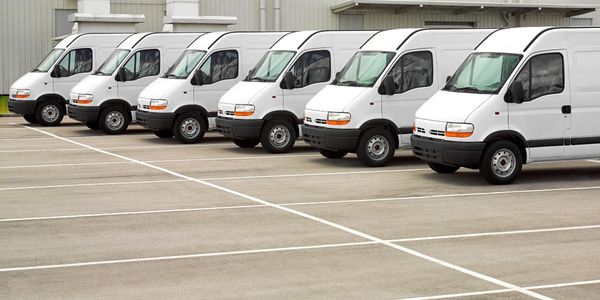Customer Company Size
Large Corporate
Region
- America
Country
- United States
Product
- FleetFocus
Tech Stack
- Database Management
- Data Reporting
Implementation Scale
- Enterprise-wide Deployment
Impact Metrics
- Cost Savings
- Environmental Impact Reduction
Technology Category
- Functional Applications - Fleet Management Systems (FMS)
Applicable Functions
- Logistics & Transportation
Use Cases
- Fleet Management
- Energy Management System
Services
- System Integration
- Data Science Services
About The Customer
The State of Utah is blessed with an abundance of natural resources including coal, minerals and oil, and understands the vital importance of resource management. The state’s leadership aims to lead the nation in the development of both traditional and renewable energy. Additionally, the state recognizes that energy efficiency and conservation are critical components of the state’s overall energy priorities. The Division of Fleet Operations is a major energy consumer in the state, charged with handling State vehicle acquisition, repair, preventive maintenance, surplus, and fueling for those vehicles, as well as offering a daily rental option for state employees needing to complete official state business. Fleet Operations provides support for over sixty agencies including the Department of Transportation, Department of Corrections, the National Guard and all of Utah’s state universities and colleges, totaling some 7,500 vehicles.
The Challenge
In 2006, the State of Utah set an ambitious goal of increasing the state’s overall energy efficiency by 20% by the year 2015. This goal had dramatic implications for all the state agencies, especially its major energy consumers; the Division of Fleet Operations. Fleet Operations is charged with handling State vehicle acquisition, repair, preventive maintenance, surplus, and fueling for those vehicles, as well as offering a daily rental option for state employees needing to complete official state business. Fleet Operations provides support for over sixty agencies including the Department of Transportation, Department of Corrections, the National Guard and all of Utah’s state universities and colleges, totaling some 7,500 vehicles. In 2007, the Utah State Legislature passed House Bill 110 titled “State Fleet Efficiency Requirements” which covers a three-fold objective from the Governor and Legislature: Reduce fleet costs or increase energy efficiency, Improve air quality in Utah by decreasing the carbon output from the state vehicles, Contribute to a general decreased United States dependency on foreign oil.
The Solution
The State of Utah has been a customer of AssetWorks (formerly MAXIMUS) for ten years, using the FleetFocus asset and maintenance management software application to manage its entire fleet of vehicles and equipment state wide. FleetFocus is the comprehensive maintenance management system that tracks all functions related to the maintenance of vehicle equipment, including repair and preventive maintenance (PM), work orders, parts inventory and procurement, motor pool and tracking all operating expenses such as fuel and oil, and billing for equipment usage. The state fleet in Utah uses FleetFocus to track and store all fleet data, whether the vehicle is maintained by one of the many state maintenance facilities or by an outsourced garage. This has allowed Fleet Operations to maintain easy access to vast amounts of historical data about their fleet. Using FleetFocus’ extensive reporting capabilities, assistant Fleet Manager Scott Bingham studied fleet costs dating back to 2004 including depreciation, maintenance costs, repair costs and warranty coverage. This study revealed that the state could reduce fleet costs through an extension of the vehicle’s life cycle. This is expected to result in an annual savings of $1.8 million.
Operational Impact
Quantitative Benefit

Case Study missing?
Start adding your own!
Register with your work email and create a new case study profile for your business.
Related Case Studies.

Case Study
IoT-based Fleet Intelligence Innovation
Speed to market is precious for DRVR, a rapidly growing start-up company. With a business model dependent on reliable mobile data, managers were spending their lives trying to negotiate data roaming deals with mobile network operators in different countries. And, even then, service quality was a constant concern.

Case Study
Vehicle Fleet Analytics
Organizations frequently implement a maintenance strategy for their fleets of vehicles using a combination of time and usage based maintenance schedules. While effective as a whole, time and usage based schedules do not take into account driving patterns, environmental factors, and sensors currently deployed within the vehicle measuring crank voltage, ignition voltage, and acceleration, all of which have a significant influence on the overall health of the vehicle.In a typical fleet, a large percentage of road calls are related to electrical failure, with battery failure being a common cause. Battery failures result in unmet service agreement levels and costly re-adjustment of scheduled to provide replacement vehicles. To reduce the impact of unplanned maintenance, the transportation logistics company was interested in a trial of C3 Vehicle Fleet Analytics.

Case Study
Zonar Takes the Wheel with a M2M Solution
Zonar’s fleet management solutions collect, report and analyze data before, during and after a vehicle’s trip. The company needed Machine-to-Machine (M2M) connectivity to enable communication between in-vehicle devices and back-end systems. To deliver high volumes of potentially sensitive information from and to moving vehicles – and keep pace with its rapid business growth – Zonar wanted a highly secure solution that it could easily manage and that had the required national and global reach.

Case Study
Driving Network Efficiency and Fraud Detection Efforts
Baltimore Gas and Electric Company (BGE) wanted to optimize the deployment and ongoing health of its advanced metering infrastructure (AMI) network and identify and reduce unbilled energy usage. BGE wanted a solution to deliver an annual economic benefit of $20 million.









